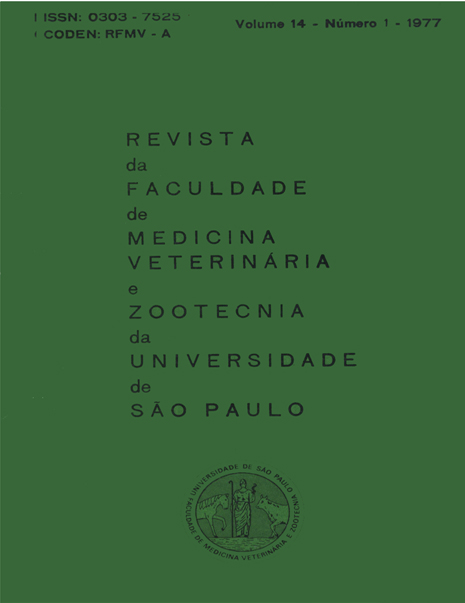Evaluation o f the influence o f antihelminthic treatments on weight gains, hemoglobin rates and helminth infestations in Guzerá yearlings, in the region of Sertãozinho, São Paulo, Brazil.
DOI:
https://doi.org/10.11606/issn.2318-3659.v14i1p149-169Keywords:
Weight gains (bovines), Anthihelminthic (treatment), Hemoglobin, Helminths (seasonal occurence)Abstract
Anthihelminthic treatment did not result in significant differences in the averages of weight gains or of bloody levels of hemoglobin when 15 treated Guzerá heifers were compared with an equal number of non-treated ones. The observations were conducted for one year-and the criterion for treatment of the treated groups was its reaching an average count of 200 eggs per gram of faeces. The no significant results were attributed to the low level of infection of the animals employed in which low egg counts prevailed during most of the time: only twice during the one year of observation did the average egg count raise above of 200 in the treated groups. Coprocultures showed a predominance of larvae belonging to the genuses Cooperia, Haemonchus and Oesophagostomum.


